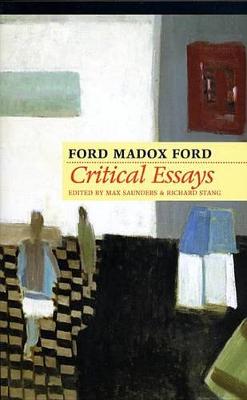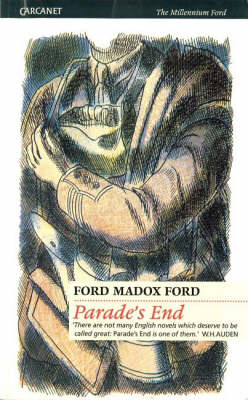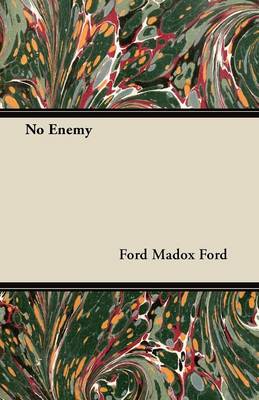The millennium Ford
4 total works
Try then to figure for yourself blood-red cliffs in to which a blue, shining mirror should have introduced itself for miles - the multicoloured boats grouped at the landing, the incredible blue of the sky, the incredible whiteness of the light - And a salad in a dish as large as a cart-wheel. And sweet cream cheese, with a sauce made of marc and other sweet herbs. And a pile, large enough to bury a man in, of apples, peaches, figs, grapes - Ford Madox Ford spent his last years in the south of France, near Toulon. In "Provence" (1935), written four years before his death, he explores both the place and the idea of it: 'not a country nor the home of a race, but a frame of mind'. Suffused with a northern European's love for 'the Roman province that lies beneath the sun', "Provence" evokes scents of rosemary and thyme in the dry air, games of boules amid shadows of ancient ruins, the food and flinty local wines. Part memoir, part travel narrative, part history of the region, "Provence" displays Ford's wise, beguiling curiosity.
Humorous, informed digressions take in the Albigensian heresy, bull-fighting, a favourite recipe for bouillabaisse, Henry James and Ellen Terry, the Troubadours and much else. Over the gaiety looms the coming barbarism, the 'fixed bayonets, machine guns, uniforms and arresting fists', against which Ford's "Provence" is a fragile, precious hope for civilised values. This edition is based on the authoritative 1935 Lippincott edition and includes the original illustrations by Ford's companion, the outstanding American artist Biala.
Humorous, informed digressions take in the Albigensian heresy, bull-fighting, a favourite recipe for bouillabaisse, Henry James and Ellen Terry, the Troubadours and much else. Over the gaiety looms the coming barbarism, the 'fixed bayonets, machine guns, uniforms and arresting fists', against which Ford's "Provence" is a fragile, precious hope for civilised values. This edition is based on the authoritative 1935 Lippincott edition and includes the original illustrations by Ford's companion, the outstanding American artist Biala.
Critical Essays showcases a critic whom Ezra Pound called in 1914, "the best critic in England, one might say the only critic of any importance." This volume provides access to the best of Ford Madox Ford's essays. The essays are arranged chronologically and span nearly forty years--covering most of Ford's writing life. Saunders and Stang have included essays, literary portraits, and book reviews that Ford published in the English Review, The Tribune, The Bystander, The Outlook, Piccadilly Review, the Transatlantic Review, and the Chicago Tribune Sunday Magazine, among other places.
"Parade's End" is the title Ford Madox Ford gave to his greatest work, the four Tietjens novels which - in Graham Greene's words - tell 'the terrifying story of a good man tortured, pursued, driven into revolt, and ruined as far as the world is concerned by the clever devices of a jealous and lying wife'. He wanted to see the book printed in one volume: "Some Do Not" (1924), "No More Parades" (1925) and "A Man Could Stand Up" (1926), with his afterthought, "The Last Post" (1928). Christopher Tietjens is the last of a breed, the Tory gentleman, which the Great War, a savage marriage to Sylvia, and the qualities inherent in his nature, define and unravel. Here, the War's attritions offered no escape from domestic witchcraft. Opposite Tietjens is Macmaster, a Scot, different in class and culture, at once friend and foil. Here, Ford's art and his human vision achieve their greatest complexity and subtlety. Gerald Hammond is Professor of English at the University of Manchester, author of "The Making of the English Bible", "Fleeting Things" and other critical volumes and editor of the "Selected Poems of John Skelton" and of "Richard Lovelace" in the "FyfieldBooks" series.
This volume is part of The Millennium Ford project which aims to bring all the major writings of this great writer back into circulation.
This volume is part of The Millennium Ford project which aims to bring all the major writings of this great writer back into circulation.
'No Enemy is Ford Madox Ford's little-known First World War novel, musing and reflective, published for the first time in Britain by Carcanet and ably edited by Paul Skinner. Congratulations to them both.' Alan Judd, Sunday Telegraph, Sunday 30th June 2002 No Enemy is one of Ford Madox Ford's most fascinating books and an act of witness to the First World War. Ford left the army in 1919 to settle in rural Sussex with the young Australian painter, Sheila Bowen. Suffering from shell-shock and erratic memory, he struggled to set down his experiences of the previous four years. Ford's protagonist is the poet Gringoire, who has survived the war and represents aspects of the writer. With his fictional frame in place, Ford created the distance necessary to confront, as Paul Skinner writes, the pains of 'having lost friends, of being terrified, afraid of going mad, afraid of dying'. No Enemy is often funny, but also profoundly moving, because Ford so clearly recovered his artistic strength in and through the writing of it.
In his introduction, Paul Skinner explores the world in which No Enemy was written, and considers how, by reinventing himself, Ford also reivented the strengths of his own writing.
In his introduction, Paul Skinner explores the world in which No Enemy was written, and considers how, by reinventing himself, Ford also reivented the strengths of his own writing.



